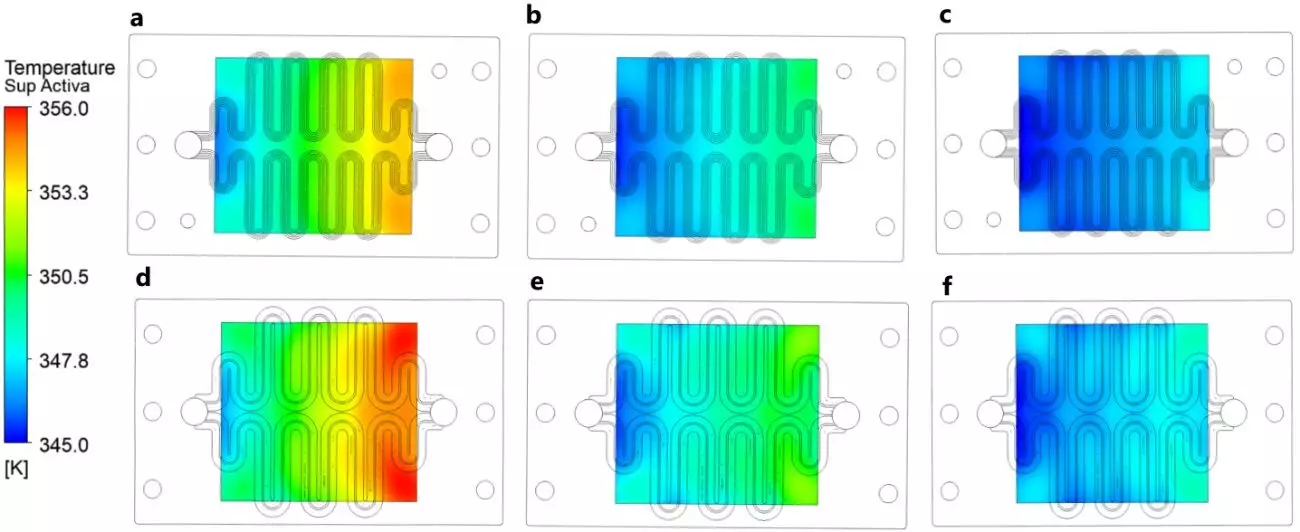The efficient functioning of polymer electrolyte membrane (PEM) fuel cells is critical in advancing clean energy technologies. As these fuel cells continue to attract attention for their potential in various applications—from transportation to stationary power generation—understanding the intricacies of their thermal management has become a priority. A recent study from a collaborative research team comprising the University of Seville, AICIA, and Harbin Institute of Technology has made significant strides in decoding the cooling mechanisms associated with PEM fuel cell stacks, specifically focusing on how temperature gradients within the membrane affect performance.
At the heart of the study lies a sophisticated numerical analysis exploring the dynamics of heat transfer through serpentine cooling channels in PEM fuel cells. By varying critical parameters such as coolant type, mass flow rate, and thermal contact resistance, the researchers were able to elucidate the factors that most significantly impact the refrigeration capabilities of these stacks. Their experiments revealed that both the mass flow rate of the coolant and the thermal conductivity of the bipolar plates play pivotal roles in optimizing cooling efficiency, an insight that could lead to more effective system designs.
Proper temperature management is essential for preserving the integrity of the membrane within a PEM fuel cell. Excessive temperature gradients pose risks of membrane degradation, which can severely compromise the fuel cell’s longevity and overall performance. The study highlights that the cooling mechanisms directly enhance the operational efficiency and lifespan of PEM fuel cell stacks. Without effective refrigeration, the potential for failure increases, underscoring the necessity for accurate modeling and optimization of cooling strategies.
One of the most notable outcomes from this research is the development of a novel correlation for the Nusselt number, a dimensionless quantity that is fundamental to characterizing heat transfer performance in fluid systems. This correlation has been designed for applicability across a broad spectrum of operating conditions, enabling enhanced predictive capabilities for researchers and engineers working to improve fuel cell designs. The ability to forecast degradation risks based on cooling configurations is particularly significant, paving the way for creating PEM fuel cells with both improved efficiency and extended operational lifespans.
The implications of this research extend beyond theoretical advancements; they are poised to inform practical applications for the design and engineering of PEM fuel cells. By providing a clearer understanding of the thermal dynamics involved and a robust correlation for heat transfer metrics, this study can drive innovation in cooling strategies. As the world moves toward sustainable energy solutions, enhancing the durability and performance of PEM fuel cells through rigorous thermal management will undoubtedly play a crucial role in the adoption of this technology. The work published in the journal Energy marks a significant step in that direction, representing a bridge between academic research and real-world application in the evolving landscape of energy technologies.


Leave a Reply